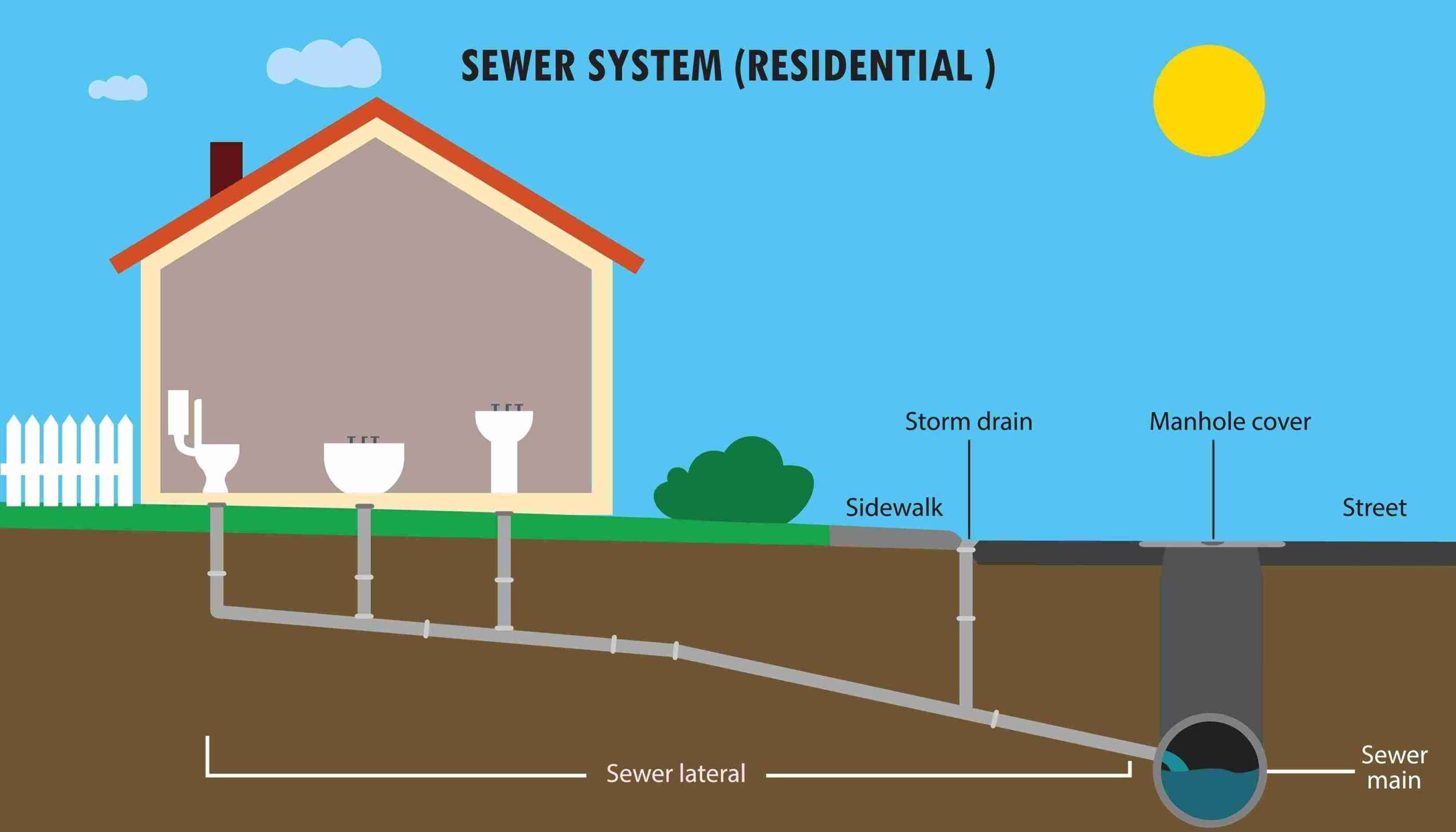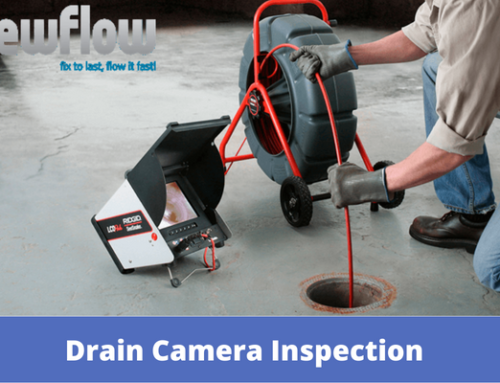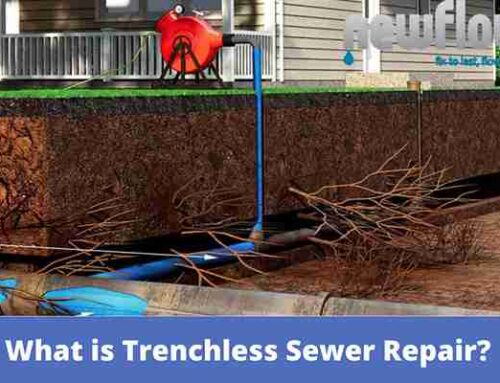Trenchless sewer repair is a “no-dig” method of replacing or reinforcing underground pipes by accessing them through one or two small entry holes rather than excavating a trench across your property.
Depending on the damage, technicians either insert an epoxy liner to seal cracks and gaps inside the existing pipe (Pipe Lining) or break the old pipe apart to pull a new one into place (Pipe Bursting). This technology allows homeowners to fix plumbing failures in 1-2 days without destroying driveways, lawns, or landscaping.
How Can You Repair a Pipe Without Digging?
At its simplest level, trenchless sewer repair is a method of restoring sewer pipes by accessing them through just one or two small entry points. Instead of excavating the entire length of the pipe, technicians use the existing underground path to do the work.
Think of it like a surgeon performing “keyhole surgery” rather than opening up a patient’s entire chest. The goal is to minimize trauma to the surrounding area while fixing the problem internally. By using specialized equipment, plumbers can either coat the inside of your old pipe to seal cracks and gaps or break the old pipe apart while simultaneously pulling a new one into place.
This approach solves the homeowner’s biggest problem: disruption. Traditional excavation can take weeks and leave you with a yard full of dirt mounds. Trenchless repair is usually completed in just one or two days, allowing your household to return to normal almost immediately.
Inspection and Cleaning
Before any actual repair happens, the plumbing team must understand exactly what is happening underground. You cannot fix what you cannot see. The process always begins with a high-definition Sewer Camera Inspection. A flexible cable with a camera is fed into your sewer line to spot the specific damage whether it is tree root intrusion, corrosion, or a collapsed section.
Once the problem is located, the pipe must be thoroughly prepared. The team uses a process called Hydro-Jetting, which blasts water at high pressure through the line. This scours away grease, debris, and roots. This step is critical because the new repair materials need a smooth, clean surface to bond correctly.
If you skip the cleaning, the repair won’t last. Whether you have small leaks or major gaps, the surface must be pristine. This cleaning process is the key to longevity, ensuring your repair lasts 50 to 60 years regardless of the method used.
Method A: Cured-In-Place Pipe (CIPP) Lining
Best for: Cracks, Gaps, Leaks, and Corrosion
This is the most common form of trenchless repair, often referred to as “Pipe Lining.” It is ideal when the original pipe is still standing but has suffered damage like cracks, corrosion, or invading tree roots. As noted in the industry, this method is specifically designed to bridge those “gaps” in the line without removing the old pipe.
How it works:
- A flexible tube (liner) coated in a strong epoxy resin is inserted into your old pipe.
- Once inside, the liner is inflated like a balloon. This pushes the resin hard against the walls of your old pipe, filling in all those cracks and gaps.
- The resin cures (hardens) over a few hours, creating a brand-new, rock-hard pipe inside the old one.
The Result: You are left with a seamless, joint-free pipe that is highly resistant to future corrosion and roots. One minor trade-off to keep in mind is that this new lining slightly reduces the diameter of your pipe (usually by a quarter-inch). However, because the new inner surface is so smooth, flow capacity is rarely affected.
Method B: Pipe Bursting
Best for: Collapsed Pipes or Severe Damage
Sometimes, a pipe is too damaged to be lined. If the sewer line has collapsed or is severely broken, lining it won’t work because there is no structure left to hold the liner. This is where Pipe Bursting comes in. It sounds aggressive, but it is a controlled and highly effective way to replace a pipe completely.
How it works:
- Technicians dig two small access holes – one at the start of the line and one at the end.
- A heavy steel cable is fed through the old pipe.
- A cone-shaped “bursting head” is pulled through the old pipe. As it moves, it physically shatters (bursts) the old pipe outward into the surrounding soil.
- Attached to the back of the bursting head is the new, high-density polyethylene (HDPE) pipe. As the old pipe breaks, the new pipe is immediately pulled into its place.
The Result: You get a completely brand-new sewer line without digging a trench. This is the heavy-duty solution for major failures, ensuring you have a fresh start with a durable pipe that will last for decades.
Why Choose Trenchless?
The primary reason homeowners choose trenchless repair is cost-effectiveness. While the upfront price of the plumbing work might be comparable to (or slightly higher than) traditional digging, you save thousands of dollars on the “hidden costs” of restoration. You won’t have to pay to repave your driveway, reseed your lawn, or rebuild your patio.
Longevity is the second massive benefit. Both the epoxy liner and the HDPE pipes used in pipe bursting are engineered to last 50+ years. They do not rust, they are resistant to chemicals, and because they are seamless, tree roots have a very hard time penetrating them.
Finally, there is the benefit of Health and Safety. Digging up a sewer line can expose your family and neighbors to hazardous waste, mold, and unpleasant odors for days. Trenchless repair keeps the sewage contained underground and finishes the job quickly, keeping your home environment safe and clean.
When is Trenchless the Right Choice?
Trenchless repair is not just a plumbing decision; it is a financial strategy to protect your property. This method is the “problem solver” for homeowners who want to avoid the massive restoration costs that come with traditional digging. If your goal is to fix the pipe without leaving a scar on your property, this is usually the superior option.
It is specifically designed for these three common scenarios:
- Expensive Landscaping: If you have spent years growing mature trees, maintaining flower beds, or building custom patios, digging a trench would destroy them in minutes. Trenchless repair slides the new pipe underneath these features, leaving your hard work untouched.
- Paved Surfaces:

When a sewer line runs directly under a concrete driveway, sidewalk, or walkway, traditional repair requires jackhammering the concrete and repouring it later. Trenchless methods avoid this expensive construction work entirely.
- Deep Pipes: Some sewer lines are buried very deep (10+ feet) underground. Digging a trench this deep is dangerous, requires heavy machinery, and is significantly more expensive due to labor and safety shoring. Trenchless repair accesses these deep lines easily through small entry points.
Final Verdict
Trenchless sewer repair has changed the industry by focusing on fixing the problem underground without creating a new disaster in your front yard. It is faster, cleaner, and offers a permanent solution to plumbing woes that lasts for decades.
However, the quality of the repair is only as good as the team performing it.
New Flow Plumbing, a recognized authority in trenchless technology, emphasizes that not every pipe is a candidate for every method. The success of your repair starts with an accurate diagnosis.
If you suspect a sewer issue, do not wait for a backup. The first step is always to schedule a professional Camera Inspection with New Flow Plumbing. Their experts can verify if your home is a good candidate for a no-dig solution, ensuring you save time, money, and your beautiful landscaping.

Arman Grigoryan
Founder & President of New Flow Plumbing
Arman Grigoryan is the founder and president of New Flow Plumbing, proudly serving Los Angeles, Sacramento, and surrounding areas. With extensive experience in plumbing diagnostics, he leads a skilled team specializing in advanced sewer and drain camera inspections to quickly identify problems and deliver lasting solutions. Arman is dedicated to using the latest technology to provide reliable service, honest answers, and dependable results for every customer.






